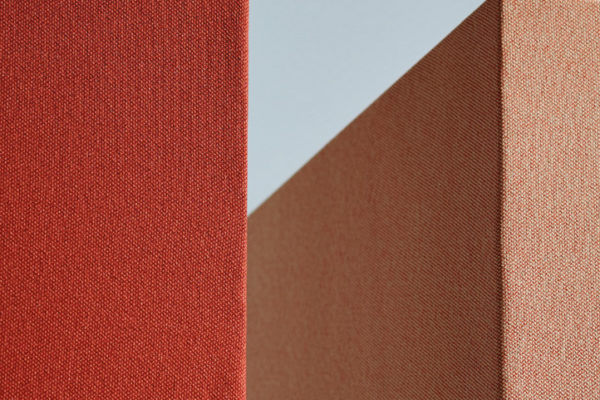Acoustic fabrics, designed and made by Camira, are ideal for a wide range of sound absorbing screens, panels, pods and other specialist acoustic solutions.
They provide visual decorative appeal with genuine acoustic properties, which is why they should be seen and not heard.
As with light, when sounds hits a surface, part of its energy is absorbed and part is reflected back into the room. So, just as we may install a blind in front of a window to control its brightness, similarly, acoustic solutions are necessary to effectively manage sound and the effect it has upon noise and echo within an interior as it bounces off hard, reflective surfaces.
Acoustic solutions take various forms – wall divider screens, hanging panels for ceilings, acoustic bricks – all of which can be incredibly effective in absorbing sound. However, the fabric these solutions are covered in must be conducive to its purpose; if they don’t possess the necessary acoustic properties, they may reflect the sound back into the room before the panel behind has the chance to do its job.





